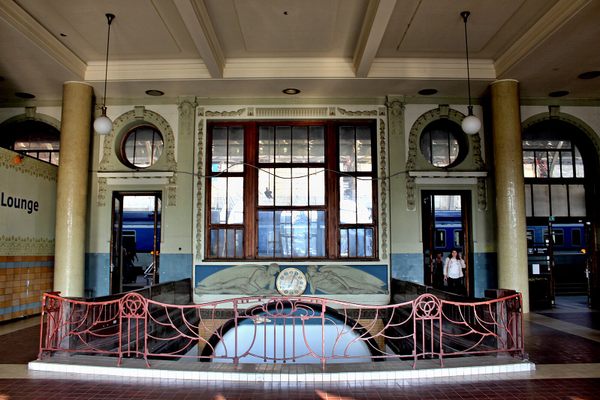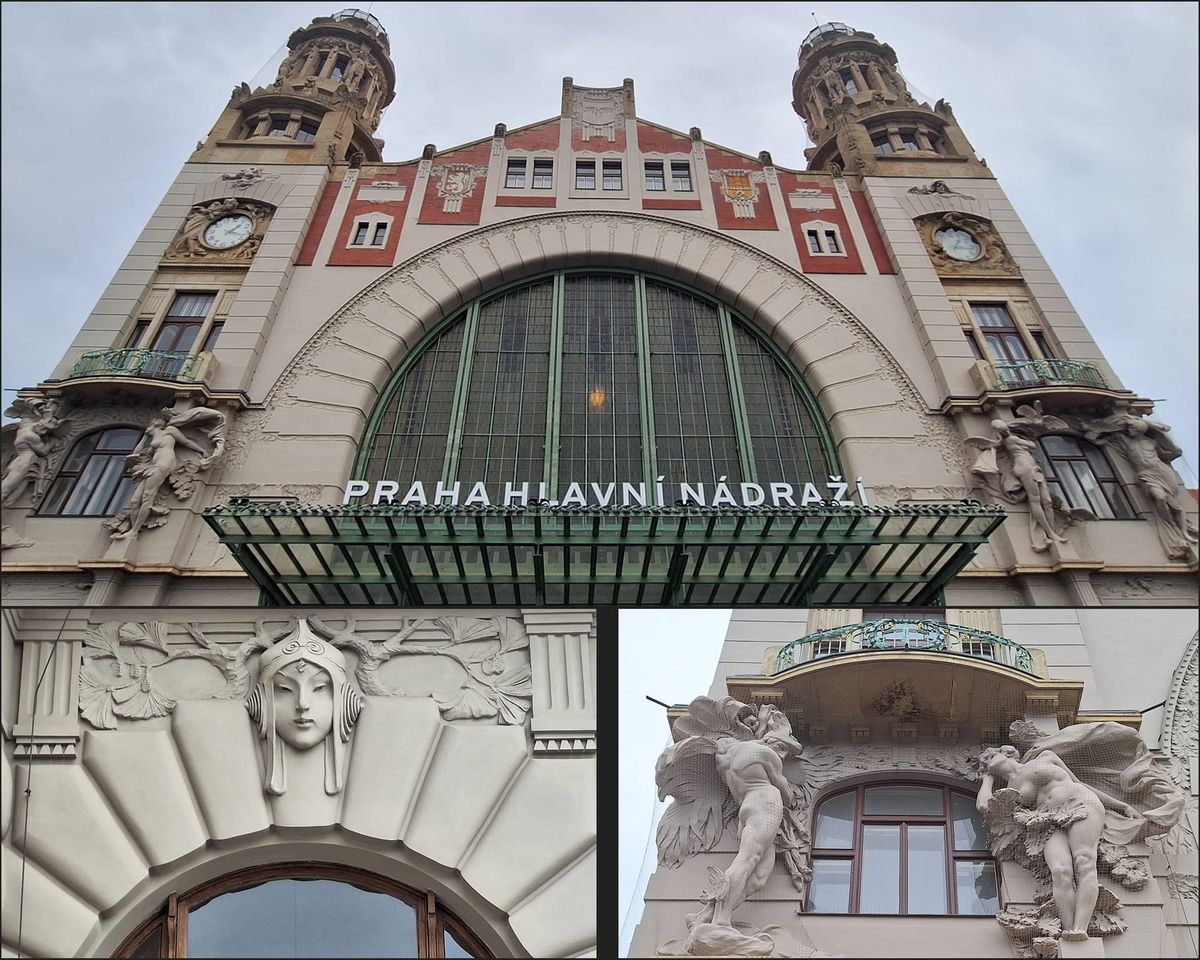About
The vestibule inside Prague Hlavni Nadrazi, Prague's main rail station, is a fantastic and historic space that has been repurposed for today's needs. The original Prague main railway station was built in the Neo-Renaissance style in 1871. However, the building soon became too small for its required capacity. At the turn of the 20th century, a public tender for reconstruction was announced.
Architect Josef Fanta won the tender with a project, based on the Art Nouveau style, with its highlight being a semicircular pavilion just inside the main entrance with ticket booths and entrances to the platforms. The front façade with the door from the street into this vestibule contains a large arch-shaped window.
The station was rebuilt, both to form this impressive ticket office and to greatly increase the number of platforms between 1901 and 1909. The vestibule dome is embellished with Art Nouveau motifs and some remarkable statues by Stanislav Sucharda and Ladislav Šaloun depicting Czech cities.
From 1972 to 1977, the building was extensively modernized with a new check-in hall and the Hlavní nádraží metro station. The influence of the communist era style is still evident in places. Following the Velvet Revolution, another complete reconstruction took place from 2006 to 2017 by the Italian company Grandi Stazioni, which modernized and restored several features such as the underground check-in hall, the central part of the historical Art Nouveau building, and the glazing of the historical hall above the platforms.
The old ticket offices that surrounded the vestibule are now shops, cafes, and restaurants. On Platform 1 of this station is a memorial to the evacuation, by train, of Over 600 Jewish children as an operation known as the Czech Kindertransport.
Related Tags
Published
March 12, 2024

















































